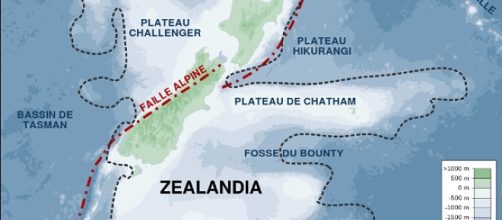The discovery of the so-called 8th continent, “Zealandia” did not only arouse the curiosity of scientists but the rest of the world as well. Nothing much is known about the long-lost continent, but researchers are determined to unlock its secrets.
Two-month drilling expedition recovered sediment cores
The International Ocean Discovery Program had conducted a two-month exploration on Zealandia which lies in the eastern part of Australia. The research on the said region which is just about the size of India consisted of 32 scientists who made drilling expedition from 8,000 to 13,000 feet below the seabed.
The scientists were able to gather information by recovering more than 8,000 feet of sediment cores where records of life have been discovered which could have lived millions of years ago.
Zealandia has a land mass of 1.9 million square miles of which 94% is underwater. However, three points could be found in New Caledonia and the northern and southern islands of New Zealand.
Specimens and fossils studied and classified
According to the expedition's co-chief scientist, Gerald Dickens thousands of specimens has been studied, and hundreds of fossil species were then identified. He added that one of the most important findings to date was that Zealandia seems to be previously shallow as compared today.
Moreover, he mentioned that the findings of the organisms’ microscopic shells that thrived in warm surface seas as well as on pores and pollen of plants that lived on land, unmask the Zealandia’s climate, and geography were significantly contrary millions of years ago.
On the other hand, the program director for the National Science Foundation's Division of Ocean Sciences, Jamie Allen said that the deposits collected from the drilling would contribute a treasury of paleoclimate data which he called "tape recorders" which pertain to Zealandia’s history.
Scientists will be able to distinguish the temperature of the ocean water before and after and when was it. Further details will point out how living things on Earth reverberated to such changes which could help researchers figure out how colossal seismic and volcanic activity may control climate change in the future.
In a National Geographic report dated Sept 27, the National Science Foundation asserted that the scientists are certain that Zealandia lies above two tectonic plates (Australian plate and Pacific plate) and was detached from Australia some 40 to million years ago.
Now, scientists are uncertain how and when the region broke off from the ‘Land Down Under’ continent. They have different opinions on whether to call Zealandia a continent too.
Zealandia was formerly recognized as an accumulation of islands and reefs. The name itself was employed by the geophysicist Bruce Luyendyk in 1995 where he based its association to New Zealand.
The extracted 2,500 sediment core during the drilling expedition process will be further studied to gather more information from Zealandia’s history especially the climate. The drilling ship will continue its duty to extract more pieces of evidence of life from the past along Antarctica, Australia, and New Zealand coasts.


